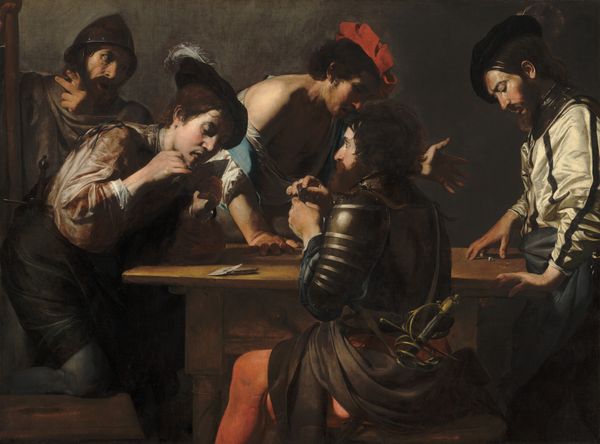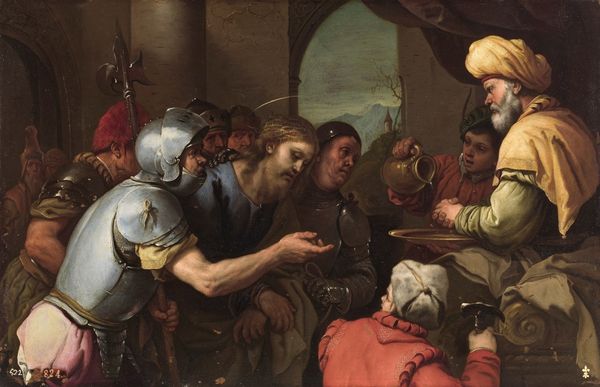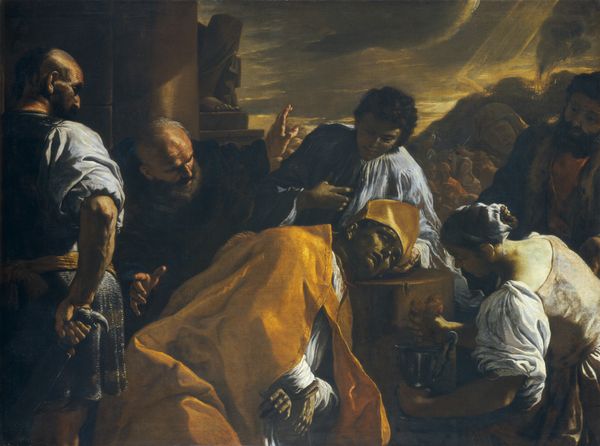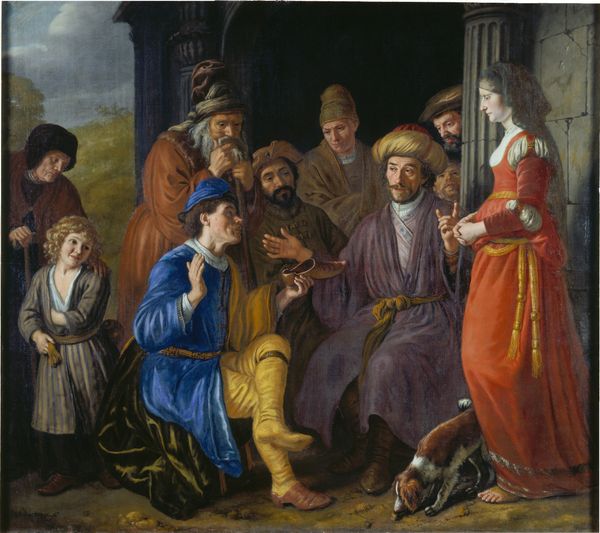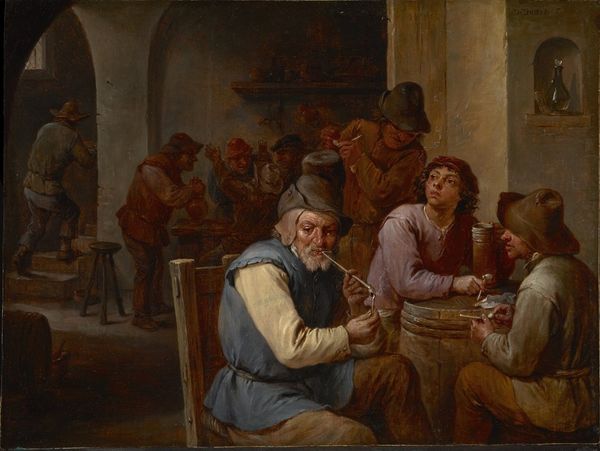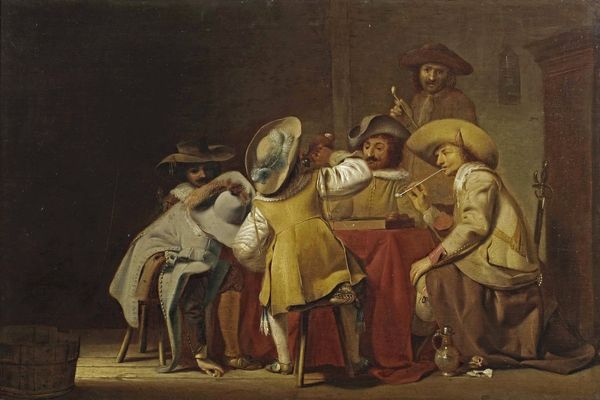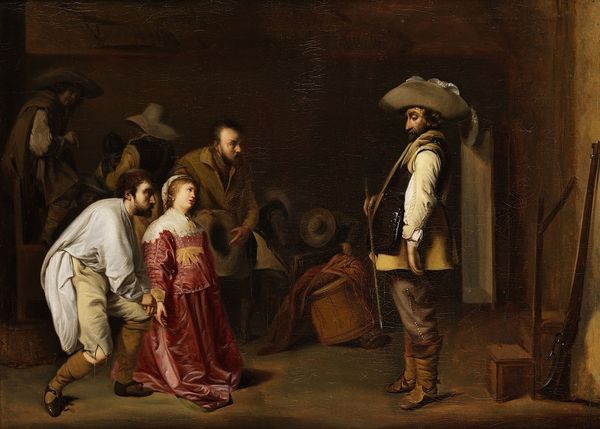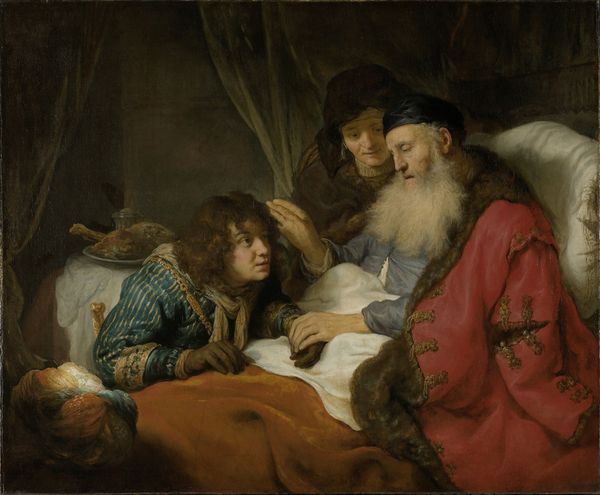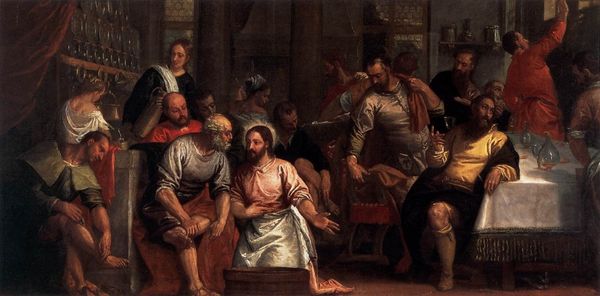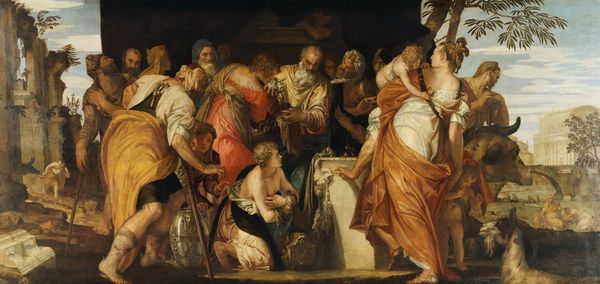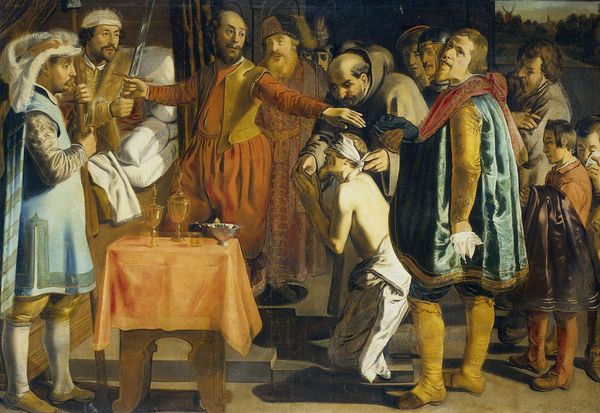
painting, oil-paint
#
figurative
#
baroque
#
dutch-golden-age
#
painting
#
oil-paint
#
figuration
#
oil painting
#
genre-painting
Copyright: Public Domain: Artvee
Editor: This is Gerard van Honthorst's "The Tooth Puller" from 1628, a genre painting rendered in oil paint. It has such a theatrical quality. I'm struck by how many faces are crammed into this small space, all watching this poor fellow's dental procedure. What symbols do you see operating here? Curator: Indeed, the concentration of figures creates a dense narrative, doesn't it? Observe the tooth puller's gaze – seemingly devoid of empathy. In many cultures, the image of the "traveling dentist" was a symbol of deceit, the pain he inflicted a metaphor for the precariousness of life and trust. And note the basket held by a figure, it appears to have ducks, perhaps bartered as payment? Editor: Oh, that’s fascinating! So the ducks suggest this transaction. And deceit... Why would that symbol endure? Curator: Think about the anxieties and superstitions surrounding health, especially in a time before modern medicine. The mouth, connected to both sustenance and speech, held a potent symbolic charge. This "dentist," seemingly enjoying his work, disrupts the body's integrity, a primal fear materialized. Does his expression remind you of any other archetypes? Perhaps a trickster figure? Editor: I can see that, a dark humor perhaps. I guess it highlights our vulnerability to those in positions of authority. Even, or especially, if they seem like charlatans. Curator: Precisely! Honthorst captured a timeless anxiety about trusting the "expert," amplified by the symbolic weight of the body and its orifices. But tell me, do you think this image is entirely negative? Editor: Well, I suppose not. There's something enduring in it, a reflection of shared human experiences... even if unpleasant ones. The continuity of these symbols is truly interesting. Curator: Agreed. The durability of these anxieties, rendered visible through art, tells us much about our cultural memory.
Comments
No comments
Be the first to comment and join the conversation on the ultimate creative platform.
